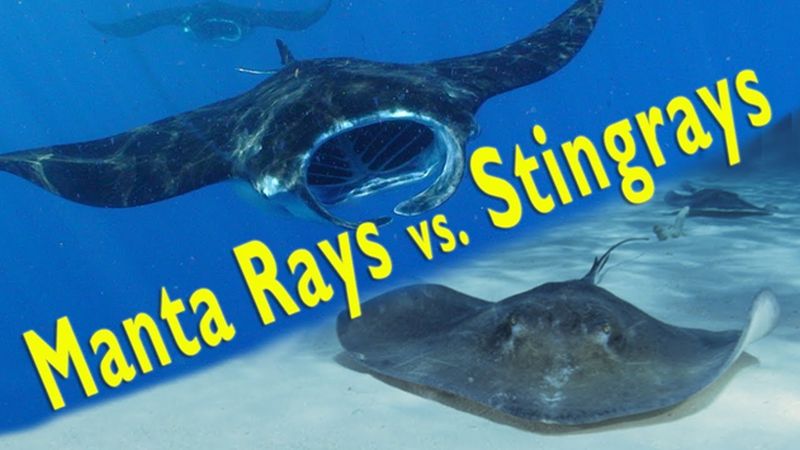Do you want to know about the difference between Manta ray and String ray? Read our article which will help you to understand these cartilaginous fishes in detail with the difference between them.
Manta ray and string ray are two such cartilaginous fishes exhibiting some interesting differences between them in size, diet, and appearance. The most important difference between mantra and string ray is the presence or absence of a stinger and another most noticeable difference between them is the size of each ray.
Read the article below to enhance your knowledge about manta ray and string ray individually.
Manta ray
Manta rays are very large rays that belong to the Manta. They are placed in the family Myliobatidae family. There are two species of manta rays, birostris, which can reach up to 7m in width and much smaller M. alfredi, which can reach widths of up to 5.5m. Manta rays are found predominantly in tropical saltwater locations and can also be found infrequently in subtropical and warm temperate salt waters.
The gestation period in mantas lasts for an over a year, and they give a birth to live ups. The mouth is large and located anteriorly with 18 rows of teeth on the lower jaw. Manta rays are docile, plankton-eating fish with a wingspan of up to 20 feet and can weigh 1 ¾ ton. Manta ray is larger and heavier in comparison to string rays. It does not have barbed stings.
Stingray
Stingrays are small cartilaginous fishes, which are more closely related to sharks. Stingrays belong to the suborder Myliobatoidei, the order Myliobatiformes and consist of eight families -Plesiobatidae, Urotrygonidae, Hexatrygonidae,Urolophidae, Dasyatidae, Gymnuridae, Potamotrygonidae, and Myliobatidae. The mouth of string ray is located on its underside and features powerful teeth that help it consume crustaceans, worms and small fish. A stinger of string ray can reach up to 35cm in length and has two grooves on the underside which have venom glands.
String rays are found in a variety of waters around the world, including tropical, subtropical and temperate waters. Some species are also found in freshwater locations. String ray has barbed strings and is smaller and lighter than manta ray. Stingrays are typically demersal, preferring to dwell on the bottom of the ocean floor.
Now, look at the difference between Manta ray and String ray which will help to understand better.
Tail Stinger
Manta rays do not possess a stinger on the tail while most string rays possess a stinger or barb on the tail.
Habitat
Manta rays are found predominantly in tropical saltwater locations while String rays are found in a variety of waters around the world, including tropical, subtropical and temperate waters. Some species are also found in freshwater locations.
Place in the water column
Manta rays are generally pelagic while stingrays are demersal, preferring to dwell on the bottom of the ocean floor.
Diet
Manta rays are filter feeders that feed exclusively on Zooplankton in the water column while string rays are bottom feeders that eat various different species of crustaceans and mollusks.
Cephalic fins
Manta rays possess a pair of cephalic horn like fins on its head while string rays do not have these, instead of having just a continuous rounded head.
Mouth location
The mouth of a Manta ray is located on the front, forward facing edge of the body, while the mouth of a stingray is located on the underside of its body.

